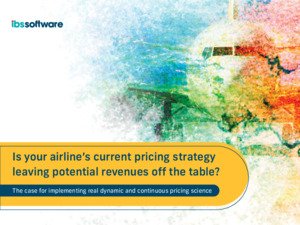
For decades, airlines have employed relatively static pricing concepts to offset the risks associated with unsold inventory and overbooking. The use of distinct pockets of inventory allocated to different prices has led to the misconception that the industry is already using dynamic pricing techniques. But don’t be fooled – existing applications sometimes called “dynamic pricing” are not dynamic at all.
Pricing in almost all systems follows predetermined categories. The concept of truly dynamic pricing – where prices are determined at the time of request, ideally in response to the shopper and the shopping context – is often discussed but not implemented. Customers do not have options truly customized for their situations. Pricing is published and selected based only on a superficial view of the customer and an airline’s yield expectation.
To add to the context, airlines have insufficient control over the pricing process. They lack the comprehensive data about their customers required to make an informed judgment. While declining, around half of all purchases are still made by customers through intermediaries rather than directly with airlines themselves. These intermediaries, in turn, make choices available to customers purely based on price as opposed to differentiating products and value delivered by the individual airlines.
It doesn’t have to be this way. Digital solutions that break down existing barriers and mindsets are already available. They allow airlines to make pricing and product decisions based on direct, individual customer interactions, while intelligent digital tools help optimize a pricing strategy by reflecting real-time changes in the travel market.
So how do we get started? At a minimum, airlines need modern capabilities that support true dynamic pricing as part of their core systems. Traditional airline systems don’t store customer preferences or attributes. They don’t associate orders based on details in a given customer’s profile. More broadly, the industry must overcome its addiction to decades-old systems that don’t provide the experiences customers demand, nor the efficiencies and business values airlines need.

